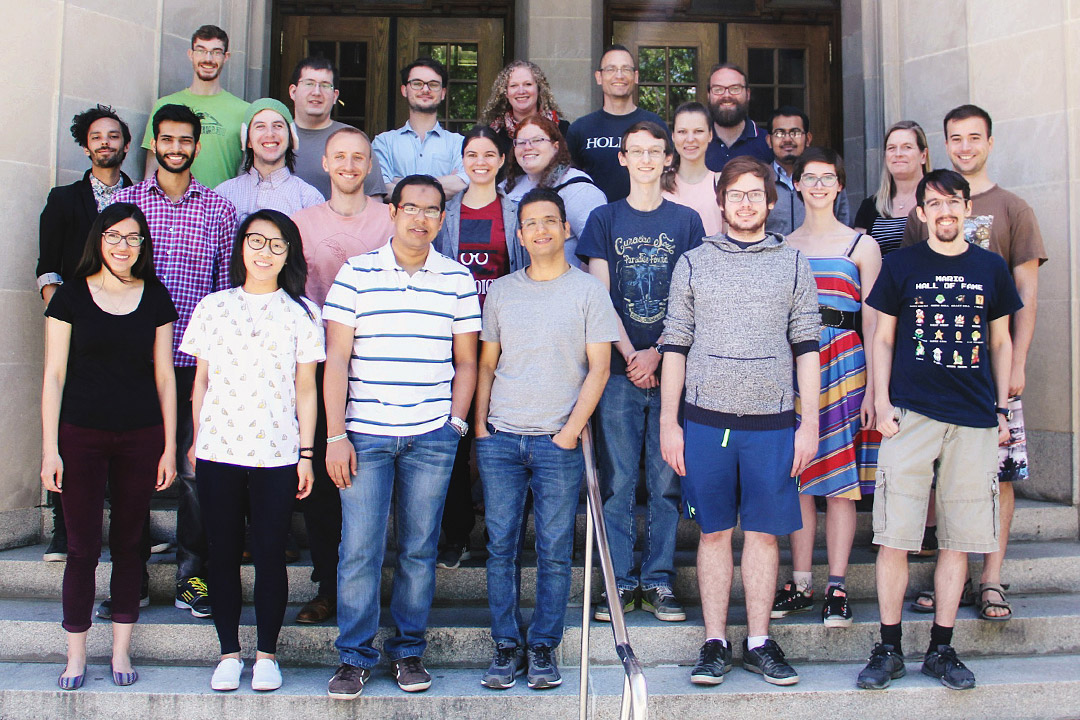
Tackling interactive identity
The topic of diversity and identity in video games is an important one—the digital media that we surround ourselves with affects our behaviour, emotions and sense of self.
By Chris MorinYet when it comes to ethnic representation, many games are repeatedly failing to meet their audiences’ demands for greater diversity.

That’s according to work done by researcher Cale Passmore of the Human-Computer Interaction Lab (HCIL) at the University of Saskatchewan. Studying how identity factors, ethnicity and culture are portrayed in video game technology and related media forms, Passmore and his cadre of researchers are hoping to make positive changes in a world where digital character features are often an afterthought.
Leading a recent survey of nearly 300 gamers located in the United States, Passmore said that a strong majority of the participants expressed strong desires for greater ethnic representation when it comes to playing video games.
“We have the technology to accurately depict all ethnicities in games, and many players acknowledge this,” said Passmore. “Aside from abysmally low racial ethnic representation in the digital actors used, even when there are options given for character creation, white characters just end up being the default, or Caucasian features are given darker skin tones, resulting in what is now known as high-tech blackface.”
But there was another majority opinion that came from the survey. Diversity shouldn’t be shoehorned in—it needs to be accurate.
“Otherwise we would just be ushering in more stereotypes or minstrelsy,” he said.
Passmore’s research on racial and ethnic experiences in digital gaming is only one part of the puzzle of the work done in human-computer interaction (HCI), one of the world’s most rapidly evolving disciplines. And there are plenty of reasons to be paying attention to this work, said one of the co-directors of the HCIL.

The lab works on a number of projects and research that range from how to visualize information to how humans interact with machines—from gaming to livestreaming experiences and everything in-between, said Regan Mandryk, a professor in the Department of Computer Science. The lab—considered a world leader in human-computer interaction, according to Mandryk—is exploring the ramifications that the video game industry is having on society.
“We have a responsibility to explore how these digital interactions affects our health and mental health, and we have a responsibility to see what this does to brain development and how we process information,” said Mandryk, noting that digital gaming is a multi-billion-per-year industry. “Beyond the economics, we need to understand how this affects society and how we can leverage these games to do things that are positive. Why not use games to help assess certain states of health conditions?”
And when it comes to mental health, Passmore said ethnic diversity in games plays a huge role. “Lack of diversity in these games is linked with anxiety, depression and shame,” said Passmore. “These norms are harming all players’ gaming experience.”
This is all endemic of a larger problem, according to Passmore. Society is already seeing the effects from racial underrepresentation in popular culture, in movies and in the media, not just in games. Still, he hopes that research coming from the HCIL will help inform future representation in digital gaming to make a better playing experience for everyone.
“(We’ve found that) players of colour are excited at the prospect of playing a character that actually represents who they are, and the health benefits—for players of all backgrounds—are too significant to ignore.”

